Introduction: Tibetan dog breeds

Tibetan dogs are renowned throughout the world. From the small and feisty Lhasa Apso to the large and majestic Tibetan Mastiff, Tibetan dog breeds are a source of joy and friendship to several people around the world.
Tibet is an incredibly beautiful country nestled in the majestic Himalayas. Tibetans are some of the most beautiful people of the world, humble, resilient, and noble.
Tibetan dogs are sculpted and are products of their environment. These dogs live in some of the most hostile and frigid environments on the planet. This inhospitable environment made these dogs hardy and rugged.
In this post, we embark on a journey into this ancient wonderland and unveil its beautiful dogs.
History of dogs in Tibet

To understand a country’s dogs, one must first understand the country of its origin, its people, its environment, and the relationship between its people and its dogs.
Ancient dogs, unlike the modern selectively bred dogs, are a product of their environment. It is the environment, more than any other factor that shapes these dogs.
Science is yet to determine the precise origins of these dogs. According to the recorded history, the Lhasa Apso is probably the oldest of all the Tibetan dogs. Some argue that the Tibetan Mastiff is older. However, there are no scientific shreds of evidence to back these claims.
The earliest record of Lhasa Apso like dog dates back to 800 BC. Experts believe, Tibetans were breeding the Lhasa Apso as early as 800 BC. Without comprehensive DNA studies, it is challenging to ascertain the first Tibetan dogs.
We know for sure the oldest dog breeds are from Asia and Africa. Tibet is geographically close to India. The Indian Pariah dog is one of the ancient dog breeds in the world.
Africanis is another ancient landrace from Africa. We speculate that the Tibetan dogs diverged from these ancient dogs several thousand years ago.
List of Tibetan dog breeds and their ancestors
| Breed | Ancestor |
|---|---|
 Lhasa Apso | Unknown |
 Tibetan Mastiff | Landrace |
 Do-Khyi |  Tibetan Mastiff |
 Tsang-Khyi |  Tibetan Mastiff |
 Tibetan Terrier | Landrace |
 Tibetan Spaniel | Unknown |
 Tibetan Kyi Apso | Landrace |
 Shih Tzu |  Pekingese |
 Lhasa Apso |
Lhasa Apso

We start our list of Tibetan dogs with the fantastic Lhasa Apso. The Lhasa Apso is the most popular among all native dogs from Tibet. The name Lhasa Apso means “hairy dog from Lhasa.”
The Tibetans call this dog. Apso Seng Kyi, they believe that the spirits of monks come and indwell these dogs. Apso Seng Kyi means, from the snow lion or the bearded snow lion dog. The mythical snow lion is the state symbol of Tibet. They believe the Lhasa Apso descends from this mythical beast.
History and Origin

This dog is an ancient dog whose precise origins are unknown. Old historical records speak of a Lhasa Apso like-dog that lived in this region during 800 BC.
There are several theories about their origins. One famous origin story is that these dogs were the runt of the litter of larger shepherd dogs. The shepherds who were unable to care for these weaker pups handed them over to monks in monasteries. Another theory is that these dogs came to Tibet through the Mongolian influence.
Without comprehensive scientific studies and DNA analysis, it is impossible to determine the origins of this dog accurately.
Purpose

In Tibet, the Lhasa Apso serves two purposes.
- Indoor Guards: This dog is one of the best indoor guard dogs in the world. Monks rely on this dog to guard the interior of the monastery while larger dogs such as the Tibetan Mastiff patrol the outdoor.
- Companion dog: The Lhasa Apso is a champion companion dog. Their small size, feisty character, and cute looks make them excel as companion dogs.
Traits

- Classification: Companion dog
- Weight: 5 – 6 kg
- Height: 23 – 28 cm
- Coat: Double coat, long outer coat with a dense inner coat
The Lhasa Apso is a small breed of dog with a big heart. The most notable feature of this dog is their size and their fur. They are beautiful to look at, with round black eyes, magnificent long hair, and small size. These traits made these dogs a preferred companion of the rich and famous.
Temperament

Don’t let their cute looks and small size fool you. This dog has a lively personality. Lhasa Apsos are not your typical wide-eyed and always ready to please dogs. Instead, they are independent and spirited.
The only way to win their trust is through mutual respect. Treat your dog well, and they will reward you with everlasting friendship. Mistreat them, and these dogs are not afraid to use their mouth.
Health

The harsh and frigid environment in which these dogs live has made them robust. The average life expectancy of these dogs is higher compared with other breeds. The following are a few ailments.
- Hip Dysplasia: This is a painful condition that affects the dog’s hips. Make sure your puppy is certified by OFA for “fair” hips. Never buy from “breeders of profit.”
- Patellar Luxation: This is another joint-related issue that affects this dog. The knee slips out of its socket, causing the dog to lose its balance.
- Keratoconjunctivitis Sicca (Dry eyes): Some dogs have dry eyes. The lack of aqueous tear causes their cornea to become dehydrated. Keep the hair out of their eyes to prevent this.
Interesting Facts
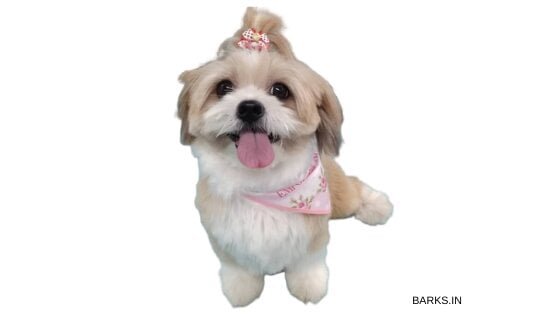
- Lhasa Apso is an ancient dog from Tibet that lived during 800 BC.
- Several notable people own a Lhasa Apso. The list includes state leaders, TV personalities, movie stars, and famous singers.
- Despite their long hair, the Lhasa Apso is hypoallergenic. These dogs don’t shed their hair and are safe for people who have allergies.
- 26 years, was the lifetime of the oldest Lhasa Apso that ever lived.
Tibetan Mastiff
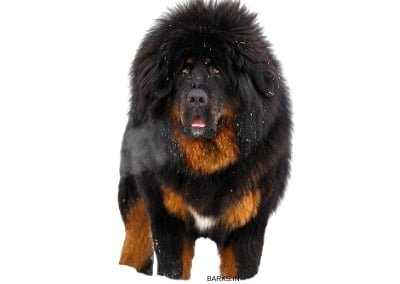
Tibetan Mastiff is another Tibetan breed of dog that has won over the hearts of dog fanciers across the world. This dog is another ancient breed that has been living in the Himalayan regions of Tibet, India, and China.
Interestingly, this dog is not a mastiff-type dog. In the mid 18th century, when Tibet opened its doors to the western world, Europeans named this dog Tibetan Mastiff. Tibetan Mountain dog is a more appropriate name for this dog.
Tibetan Mastiff Association of India and the American Tibetan Mastiff Association are associations setup by dog fanciers to preserve this dog. The American Tibetan Mastiff Association promotes the American Tibetan Mastiff line and works towards its preservation.
Not many outside Tibet know this fact, there are two types of Tibetan Mastiffs, each one fulfills a specific purpose.
- Do-Khyi
- Tsang-Khyi
Both of these dogs share a common ancestor. Some argue that these are two distinct dog breeds. The Do-Khyi is slightly smaller are shepherd and livestock guardian dogs. Tsang-Khyi, on the other hand, is more substantial, lion-like in appearance, and is a monastery guard dog.
Do-Khyi (Shepherd’s Tibetan Mastiff)

The Do-Khyi is a type of Tibetan Mastiff that is smaller and is a livestock guardian. Experts believe that these dogs, due to their outdoor lifestyle, are smaller, more agile, and more suited for a shepherding role.
In Tibet, the Do-Khyi is a commoners dog. The name Do-Khyi means, “a dog that can be tied.” To understand the meaning, one must look beyond letters and words.
In Tibet, village houses have one way-in and out. This style of construction ensures optimal insulation from the frigid weather. The Do-Khyi Tibetan Mastiff is tied or chained to a pole that marks the entrance. This is the Tibetan meaning of Do-Khyi.
History and Origin
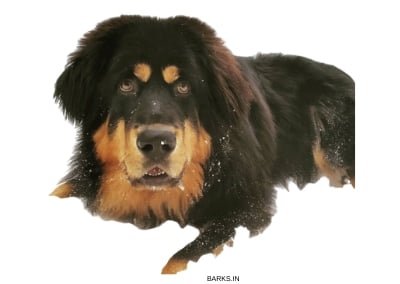
Tibetan Mastiffs are an ancient breed of dogs. They are the real Himalayan mountain dog, well-suited for the rugged and inhospitable Himalayan region. Guarding homes and livestock against snow leopards, Tibetan wolves, and other large predators, the Do-Khyi is a formidable dog.
There are no written records of these dogs from ancient times. It was only after the arrival of the British, these dogs came into light. We speculate that the Do-Khyi and the Tsang-Khyi are descendants of the ancient Tibetan Mastiff dog.
Purpose
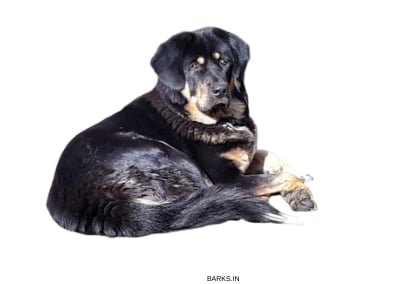
The Do-Khyi is a watchdog that lives along with the people in their villages. They are a versatile dog, guarding the livestock during the day and protecting the home during the night.
These dogs are not trained. Instead, while they are young adults, they are taken to the field where they learn from older dogs. Shepherds use whistles and click to direct this dog on the field.
Traits
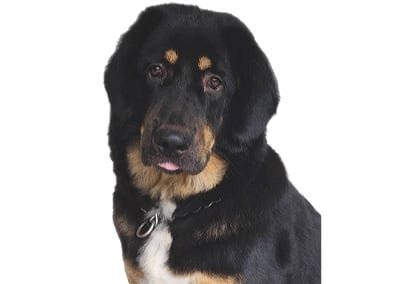
- Classification: Working
- Weight: 55 – 70 kg
- Height: 64 – 67 cm
- Coat: Double coat
The Do-Khyi is a large breed of dog. It is an ancient breed that is sculpted by its environment. These dogs have a thick double coat. Both the inner and outer coats are long, giving them excellent insulation from the frigid Himalayan weather.
The Tibetan Mastiff breed is popular in two colors. Black and Tan, is rare but beautiful and red Tibetan Mastiff. Recent genetic studies indicate dogs such as Rottweiler, Saint Bernard, and the Bernese mountain dog are related to this dog.
Temperament
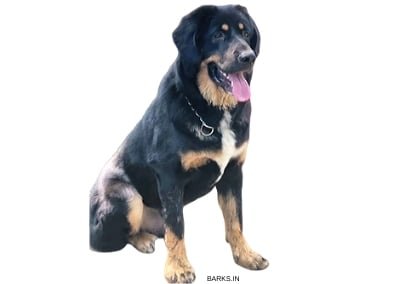
The Do-Khyi is not your average household pet dog. In Tibetan villages, dogs have to fulfill specific roles. These dogs are tough, independent, and unrelenting while on the attack.
During the day, the Do-Khyi accompanies their master in herding and guarding its flock. During the night, these dogs are chained to entrances where it guards the home.
People know not to venture near the Do-Khyi’s territory. Unlike, the modern dogs that bark, the Do-Khyi attacks. While they look impressive and attractive, these are not dogs for novice owners. Even a young Tibetan Mastiff puppy will exhibit stubbornness and don’t like to be subdued even while playing.
Health

The average life span of the Do-Khyi Tibetan Mastiff breed is 10 to 15 years. This is the highest life expectancy among the large breed of dogs. The following are a few ailments that affect this breed.
- The Do-Khyi suffers from bone-related issues. Hip dysplasia and elbow dysplasia are painful conditions that require veterinary care.
- They are prone to environmental allergies, such as dust and pollen. This dog lives in some of the cleanest places on our planet, which makes it vulnerable to allergies.
- Hypothyroidism is a condition where the thyroid gland malfunctions causing metabolic disorders in this breed.
Interesting Facts
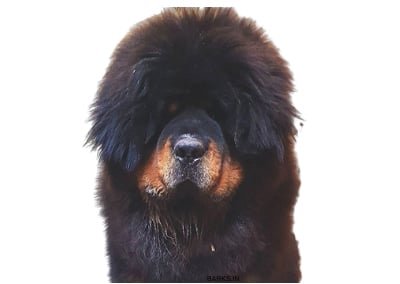
- The Do-Khyi is a Tibetan Mastiff variant that is smaller than the Tsang-Khyi.
- This dog is a shepherd’s dog and a guard dog.
- The Do-Khyi is more agile and better suited for outdoor life than its larger cousin, the Tsang-Khyi.
- This dog is one world’s most expensive dog breeds.
Tsang-Khyi (Monastery Tibetan Mastiff)

The Tsang-Khyi is a type of Tibetan Mastiff that is larger and heavy-boned than its close relative, the Do-Khyi. This dog has a unique lion-like appearance.
The Tsang-Khyi lives with monks and is a monastery guardian. Unlike the Do-Khyi, these dogs are not suited for outdoor life. Large size, heavy-bones makes these dogs unfit as a shepherd.
This dog excels as a formidable guard dog. Capable of guarding vast areas, they are the perfect monastery guardian. Tibetans believe that the Tsang-Khyi is a Rakshasas or powerful demons. Rakshasa is a reference to this dog’s fiercely protective instincts.
History and Origin

The Tsang-Khyi is a type of Tibetan Mastiff. They are an ancient breed of dogs. Some experts claim that these dogs are descendants of the Tibetan grey wolf due to their ability to thrive in harsh Tibetan weather.
Purpose

The Tsang-Khyi is a watchdog. These dogs live in the Tibetan monastery and are responsible for guarding the outer court of the monastery. Large, powerful, and intimidating, these dogs excel as a guard dog.
Traits

- Classification: Working
- Weight: 65 – 90 kg
- Height: 70 – 73 cm
- Coat: Double coat
The Tsang-Khyi is a giant breed of dog. Large size, lion-like appearance, and an intimidating temperament are the hallmarks of this dog. These dogs require experienced handlers and cannot be managed by novice dog owners.
The Tsang-Khyi is a dog that is seldom sold to the outside world. Only a handful of these dogs live outside of Tibet. This is a beautiful and ancient breed of dog that is like a bright jewel in the doggie world.
Temperament

The Tsang-Khyi is independent, one-person, and a fiercely protective dog. In Tibet, these dogs spend most of their lives guarding the monastery where it lives.
The Tibetans believe these dogs are Rakshasa in disguise. Ready to pounce anyone who dares to intrude into its territory.
Health
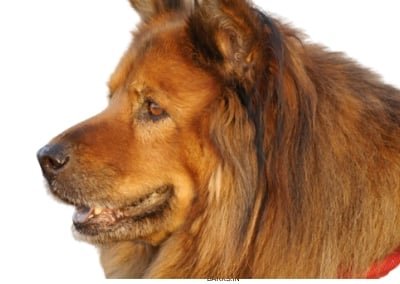
The following are some health issues that affect this dog.
- The Tsang-Khyi suffers from bone-related issues. Hip dysplasia and elbow dysplasia are painful conditions that require veterinary care.
- They are prone to environmental allergies, such as dust and pollen. This dog lives in some of the cleanest places on our planet, which makes it vulnerable to allergies.
- Hypothyroidism is a condition where the thyroid gland malfunctions causing metabolic disorders in this breed.
Interesting facts

- Tsang-Khyi is the large variant of the Tibetan Mastiff. Only a handful of these dogs live outside Tibet.
- Due to their fierce temperament, they are locally called the Rakshasa.
- Some unverified new reports claim that a zoo in China unwittingly bought a Tibetan Mastiff, thinking they were purchasing a lion.
- This dog is one of the most expensive dog breeds in the world.
Tibetan Terrier (Tsang Apso/ Dokhi Apso)

Tibetan Terrier, despite its name, is not a Terrier-type dog. In Tibet, these dogs are called Tsang Apso, the bearded-dog, or the Dokhi Apso, which means the outdoor dog.
The Tibetan Terrier is an ancient breed of dogs living in Tibet for several thousand years. They are a small breed with a thick shaggy coat, which gives them excellent protection from the elements.
To the Tibetan people, the Tsang Apso is a harbinger of good luck and are the holy dogs of Tibet. In the early 19th century, these dogs were named the Lhasa Terrier.
History and Origin
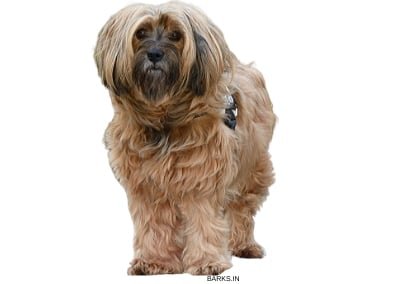
Like the other Tibetan dogs, the origin of this dog is still a mystery. One thing is sure, all Tibetan dog breeds are ancient. This is a country that has remained inaccessible for several thousands of years, making it challenging to understand its dogs completely
Purpose
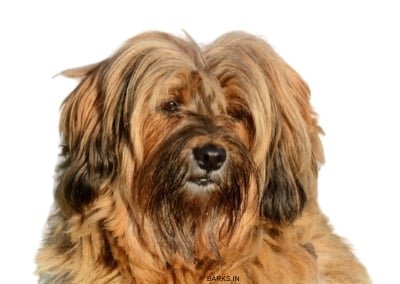
The Tibetan Terrier serves multiple purposes. They are a capable watchdog, alert, and wary of strangers. This dog is also an excellent family companion. They are loyal, loving, and playful little dogs that are compatible with the entire household.
Tibetan Terriers are agile and have quick feet. Tibetans also use this dog as a retriever. Capable of traversing steep Himalayan slopes to retrieve household items.
Traits
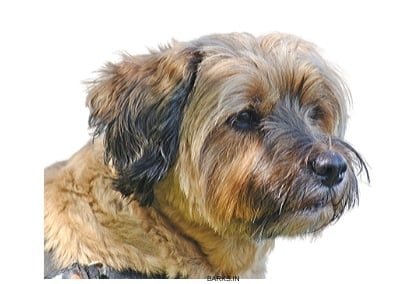
- Classification: Companion
- Weight: 8 – 14 kg
- Height: 35 – 41 cm
- Coat: Double coat
This dog is small-to-medium in size, agile, and alert. With a long shaggy coat and a prominent beard, they resemble the Bearded Collie. They have a well-muscled and square-shaped body, eyes are almond-shaped, and V-shaped ears.
In short, these are adorable little dogs with an excellent character. They are an outstanding companion dog.
Temperament
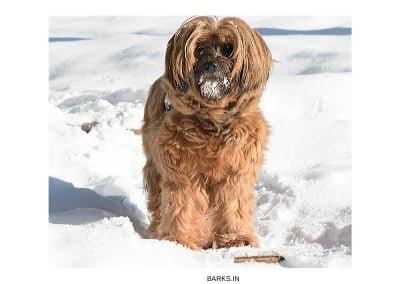
The Tibetan Terrier is an excellent companion dog. They have a gentle and loving character. As a watchdog, they are wary of strangers. With proper socialization, the Tibetan Terriers accept friends and other pets.
If you are looking for a family dog, the Tibetan Terrier is the dog for you. They can live in an apartment, and their balanced personality makes them easy to handle dogs even for novice owners.
Health

The average lifespan for the Tibetan Terrier is 15-16 years. They are a healthy breed of dog.
- They are prone to genetic disorders. Neuronal ceroid lipofuscinosis causes blindness in these dogs.
- Epilepsy is a life-threatening condition in which the dog suffers from seizures.
Interesting Facts

- Tibetan Terriers are agile and nimble. Tibetans use these dogs to retrieve household items from deep Himalayan ravines.
- This dog also excels in dog agility competitions and herding competitions.
- The hallmark of this dog is its gentle temperament, balanced, kind, and loving.
Tibetan Spaniel

The Tibetan Spaniel is a small monastery dog. Throughout history, this dog has lived a privileged life. Living in monasteries and palaces, the Tibetan Spaniel is an excellent companion dog.
Despite its name, the Tibetan Spaniel is not a gun-dog like the other spaniel breeds. They are companions of royalty. Tibetan rulers have a practice of exchanging these dogs with the Chinese emperors.
History and Origin

The precise origins and the history of the Tibetan Spaniel are unknown. Some speculate that the Tibetan Spaniel, Japanese Chin, and Pekingese have a common ancestor. This is from the fact that these dogs are exchanged as goodwill gifts, they likely have a common ancestor.
The Tibetan Spaniel has a close resemblance to the Chinese guardian lions making them prized possession in both China and Tibet. It was only in the late 18th century these dogs reached England and India.
Purpose

The Tibetan Spaniel serves two purposes. One, they are an indoor watchdog. Like the Lhasa Apso, this dog is also alert, agile, and assertive. They have an excellent sense of sight and smell, using which they guard indoors.
These dogs are also an excellent companion dog. Living with the monks in the monastery. During clod winter nights, monks keep these dogs close to them for warmth.
Traits
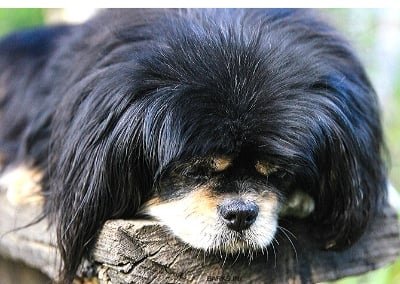
- Classification: Companion
- Weight: 4 – 8 kg
- Height: 20 – 25 cm
- Coat: Double coat
The Tibetan Spaniel is a small breed of a companion dog. This dog has a long double coat, round eyes, and an assertive character, making them extremely pleasing to our eyes.
This dog comes in all colors with white markings. They have a curved tail and a square-shaped body.
Temperament
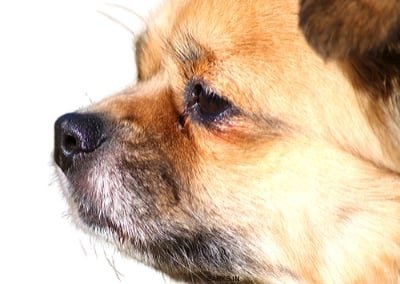
The Tibetan Spaniel is a loving dog with an assertive character. They are wary of strangers but is extremely attached to its family. These dogs love when they are pampered and are constant attention seekers.
They are cat-like and will spend a considerable amount of time cleaning their coat. This dog also has a tendency to wander off and likes to explore. In the monastery, this dog sits on vantage points from where they keep a lookout for intruders.
Tibetan Spaniels are also social dogs, they don’t like being left alone. This dog is an excellent choice for first-time dog owners.
Health

The following are a few health issues that affect this dog.
- This dog suffers from skeletal issues. Hip dysplasia and elbow dysplasia are painful genetic conditions.
- Epilepsy is a life-threatening condition in which the dog suffers from seizures.
- They are prone to environmental allergies, such as dust and pollen.
Interesting facts
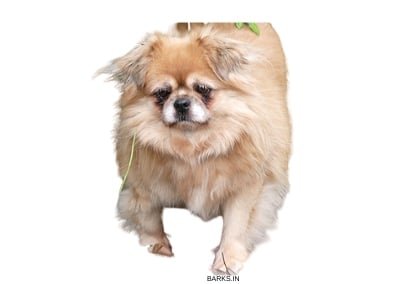
- The Tibetan Spaniel, despite its name, is not a spaniel. They are a companion dog.
- This dog closely resembles the Chinese guardian lions making them prized possession in both Tibet and China.
- This dog is an indoor guardian protecting vast monasteries and palaces.
Tibetan Kyi Apso

The Tibetan Kyi Apso is a medium-to-large breed of shepherd dogs from Tibet. This dog is a rare Tibetan dog breed only a handful of dogs live outside Tibet.
In Tibet, this dog is known as the Apso Do-Kyi, meaning, a hairy dog that is tied. Some call this dog Tibetan Collie due to its size and resemblance to Collie-type dogs. However, this dog is not a Collie.
History and Origin
The Kyi Apso remained hidden from the rest of the world for thousands of years. Even today, very few dogs live outside of Tibet. The precise origins of this dog are unknown.
They are an ancient and primitive breed of dog. It was when the British reached Tibet the western world knew about this dog. The famous Captain George Augustus Graham was the first to import this dog to England. He called this dog, the Tibetan Wolf Hound.
Purpose
The Kyi Apso is a livestock guardian and a protector of property. This dog is dominant, territorial, and is hardy, making them well-suited for outdoor life. The Kyi Apso is a primitive dog that has retained its pack instincts. They are capable of working in packs when herding their flock.
Traits

- Classification: Working
- Weight: 38 – 45 kg
- Height: 55 – 60 cm
- Coat: Double coat
The Kyi Apso is a medium-to-large breed of dog. They are powerfully built, agile, and nimble dogs. This dog is capable of working long hours tirelessly in the harsh Himalayan weather.
The Kyi Apso is a distinct breed of dog and not a variant of the Tibetan Mastiff. This dog does not have wrinkled skin or the giant size of the Tibetan Mastiff.
This dog is not recognized by any Kennel Club. In order to preserve this large dog, Kennel Clubs such as the American Kennel Club or UKC need to recognize this dog.
Temperament
Playful, intelligent, and loyal are the hallmarks of the Kyi Apso’s personality. Despite living in harsh conditions and with protective instincts, the Kyi Apso is gentle, loving, and loyal.
This dog is much easier to manage than the intimidating Tibetan Mastiff due to its playful nature. Unlike, the Tibetan Mastiff, this dog uses mellow tactics when guarding, such as barking rather than confrontation.
Health
The Kyi Apso is a healthy breed of dog. No studies or statistics exist on the health of this dog. The following are some issues that affect dogs that are similar to the Kyi Apso.
- Progressive Retinal Atrophy (PRA) is an eye ailment when untreated can cause night blindness.
- Muscle and skeletal issues such as torn ACLs, elbow issues, etc. occur.
- This dog sometimes suffers from Hypothyroidism is a condition where the thyroid gland malfunctions.
Interesting facts

- The Kyi Apso is a large breed of shepherding dogs for Tibet. They are a rare breed of dog.
- Kyi Apso is not a variant of Tibetan Mastiff as some incorrectly assume they are a distinct breed of dog.
- Despite being an outdoor dog, they are playful and gentle breed.
Shih Tzu
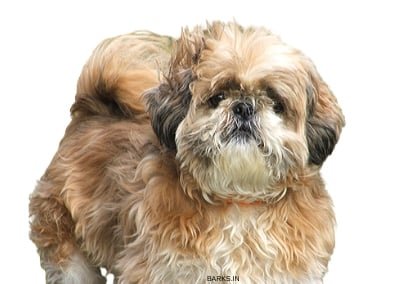
The next dog in our list of Tibetan dog breeds is the world-famous Shih Tzu. Shih Tzu is a toy breed. Small size, gentle nature, and loyalty are the hallmarks of this breed of dog.
The Shih Tzu is the most popular dog from Tibet. They rank #20 on the AKC’s popularity list. A cherished companion of several renowned people around the world.
History and Origin

Experts believe that the Shih Tzu is a cross between Lhasa Apso and Pekingese dogs. The Dalai Lamas of Tibet have a practice of gifting the Lhasa Apso to Chinese emperors. Experts believe the Chinese crossed the Pekingese with these Lhasa Apsos, which resulted in the Shih Tzu.
This dog was prized in China, and never sold or sent outside China. It was only in the early 19th century the English managed to get their hands on this beautiful dog. Since then, the Shih Tzu has become one of the most popular dogs from the entire Asian continent.
Purpose

The Shih Tzu is a lap dog. Unlike the Lhasa Apso, which was an indoor guardian, this dog is a companion dog. The Shih Tzu is a social dog and tolerates strangers.
Traits
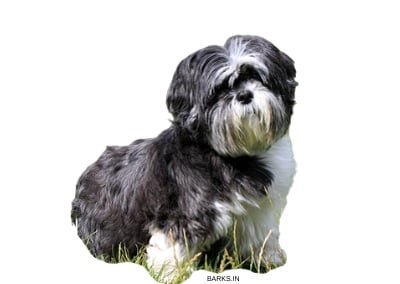
- Classification: Toy
- Weight: 4.5 – 7.3 kg
- Height: 24 – 26.7 cm
- Coat: Double coat
The Shih Tzu is a small breed of toy dog. These dogs have a long silky coat that needs grooming and care. People trim this dog’s hair to minimize grooming needs. Shih Tzu’s hair is similar to that of human hair, long and grainy. Shedding is also similar to humans. Shedding is minimal, making them hypoallergenic dogs.
Temperament

Like all toy and lapdogs, the Shih Tzu is friendly and loving. They are social and long for companionship. These dogs tend to be possessive, especially when they live along with other dogs.
Health
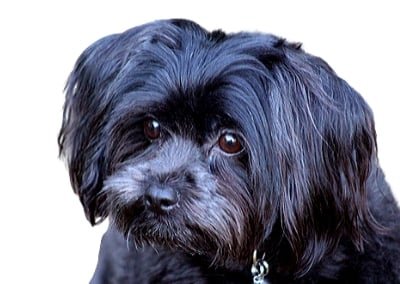
The following are some health issues that affect this dog.
- Entropion is a condition that causes the eyelids to fold inward, causing discomfort to the dog.
- They suffer from eye-related issues such as cataracts, red-eye, etc.
- Being a small breed, they are prone to patellar luxation or kneecap dislocation.
Interesting facts
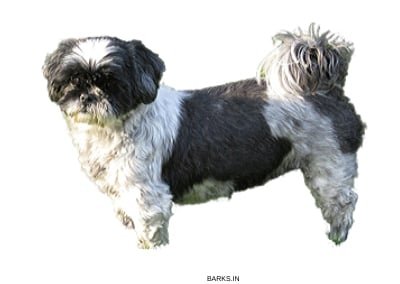
- The Shih Tzu is the most popular dog from Asia. They rank #20 on AKC’s most popular dog list.
- They are a cross between the Lhasa Apso and the Pekingese dog.
- This dog is the companion of several notable personalities.
Other notable Tibetan dogs and crosses
Both Lhasa Apso and Shih Tzu are famous dogs. Crosses between these dogs and with other small breeds are gaining in popularity. Dog fanciers call these dogs designer dogs, as they are “designed” and selectively bred.
In this section of our post, we explore some of these fantastic designer breeds which originate from the Tibetan dog breeds.
Exciting Lhasa Apso crosses
The below is a list of some of the exciting Lhasa Apso crosses.
| Breed | Ancestor |
|---|---|
 Shih Apso |  Shih Tzu |
 Lhasa Apso | |
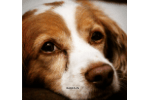 Be-Apso |  Beagle |
 Lhasa Apso | |
 Chi-Apso |  Chihuahua |
 Lhasa Apso | |
 Lhasa-Coton |  Lhasa Apso |
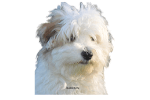 Coton de Tulear |
Shih Apso

Lhasa Apso x Shih Tzu = Shih Apso
Shih Apso is a designer hybrid dog. This dog is a cross between the two Tibetan dogs, the Lhasa Apso and the Shih Tzu. The Shih Apsos are a relatively new breed that is still without a standard form.
Shih Apsos occur in several coat types, long and silky, straight, and rough. This dog is an excellent companion and a lapdog.
Be-Apso

Lhasa Apso x Beagle = Be-Apso
The Be-Apso is a cross between the Lhasa Apso and the Beagle. This dog combines the gameness of the Beagle with the alertness of the Lhasa Apso. The Lhasa Apso is an indoor guardian, and the Beagle is a scenthound making the Be-Apso a fascinating breed.
Chi-Apso
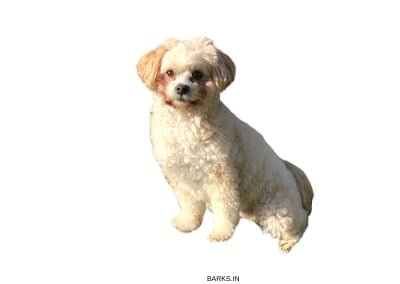
Lhasa Apso x Chihuahua mix = Chi Apso
The Chi Apso is a cross between the Chihuahua and the Lhasa Apso. This dog is friendly, active, and with an excitable character. The Chi Apsos are timid, but playful dogs. Puppies look like Chihuahua, and as they mature, their hair grows.
Lhasa-Coton
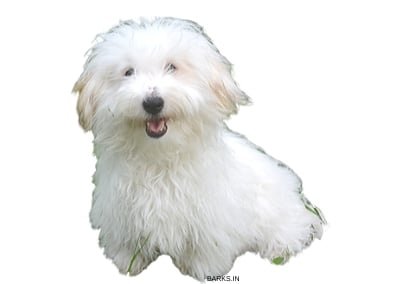
Lhasa Apso x Coton de Tulear mix = Lhasa-Coton
The Lhasa-Coton is a cross between the Lhasa Apso and the Coton de Tulear of Africa. This combines the gentle character of the Coton with the assertiveness of the Lhasa Apso.
Fantastic Shih Tzu crosses
The below is a list of some of the remarkable Shih Tzu crosses.
| Breed | Ancestor |
|---|---|
 Be-Tzu |  Beagle |
 Shih Tzu | |
 Blu-Tzu |  Blue Heeler |
 Shih Tzu | |
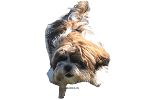 Cava-Tzu | 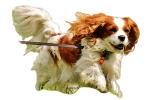 Cavalier King Charles Spaniel |
 Shih Tzu |
Bea-Tzu

Shih Tzu x Beagle = Bea-Tzu
The Bea-Tzu is a mix of Beagle and the Shih Tzu. The Bea-Tzu is inquisitive, with an excellent sense of smell which they inherit from the Beagle.
Blu-Tzu
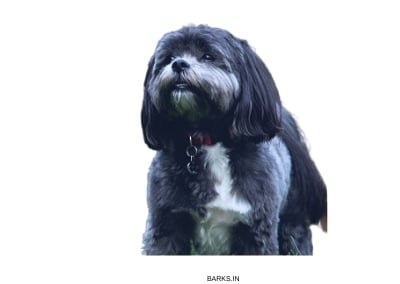
Shih Tzu x Miniature Blue Heeler = Blu-Tzu
Blu-Tzu is an exciting mix. This dog combines the best cattle dog in the world with the best companion dog. The Australian Blue Heeler is intelligent, agile, and busy. Shih Tzu, on the other hand, is a companion. Blu-Tzu combines these traits.
Cava-Tzu

Cavalier King Charles Spaniel x Shih Tzu = Cava-Tzu
The Cava Tzu is a mix of two beautiful dogs. Both the CKC and the Shih Tzu are excellent companion dogs. Cava-Tzu is an energetic, loving, and loyal companion.
Conclusion: Tibetan dog breeds
Tibet has some of the world’s most fascinating large breeds of dogs and small dogs. All Tibetan dog breeds are products of their environment, and they are hardy, rugged, and dependable.
Dogs like the Tibetan Kyi Apso are rare and need to be preserved. While all of us enjoy designer dogs, cross-breeding should be done with utmost care. Rampant cross-breeding for designer dogs can pollute the gene pool of these magnificent dogs.
The need of the hour is the preservation of these ancient dogs. As dog lovers, it is our responsibility and privilege to ensure the survival of these dogs.

